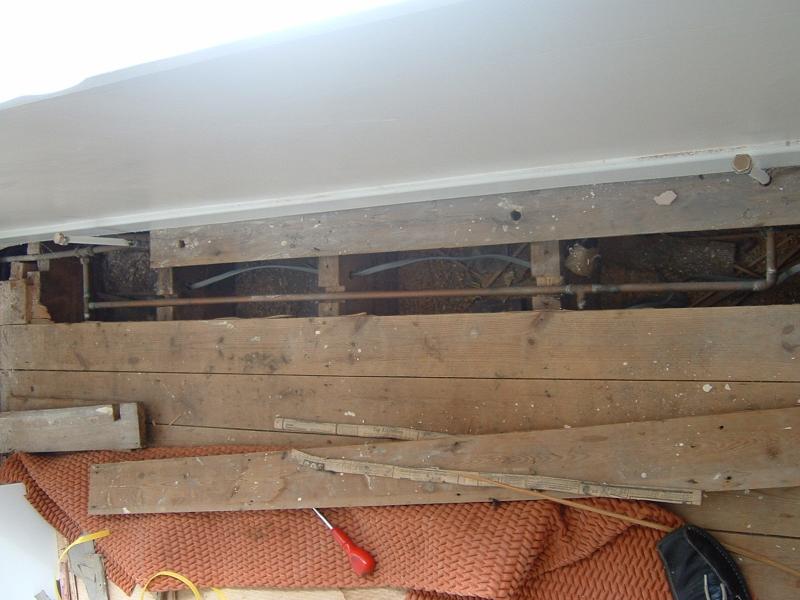thanks for your help on this guys.
on the left and right of the of the pic you will see the vertical pipes which join to the rad. further left than the left side rad feed pipe, there is another underfloor pipe (going down to bottom of the picture) which has travelled the length of the room (dont know where its come from).
between the pipe which connects to the right side of the radiator, and the first joist, there is another pipe going down the picture (parallel to the one discussed above). these two pipes are joined by the pipe which runs horizontally across the picture. i dont understand how any water is pursuaded to flow through the radiator as there is no pressure drop.
i understand the analogies with an electrical circuit and whether the radiators are in parallel or even in seires but the ones in my house simply look like they are shorted out!


